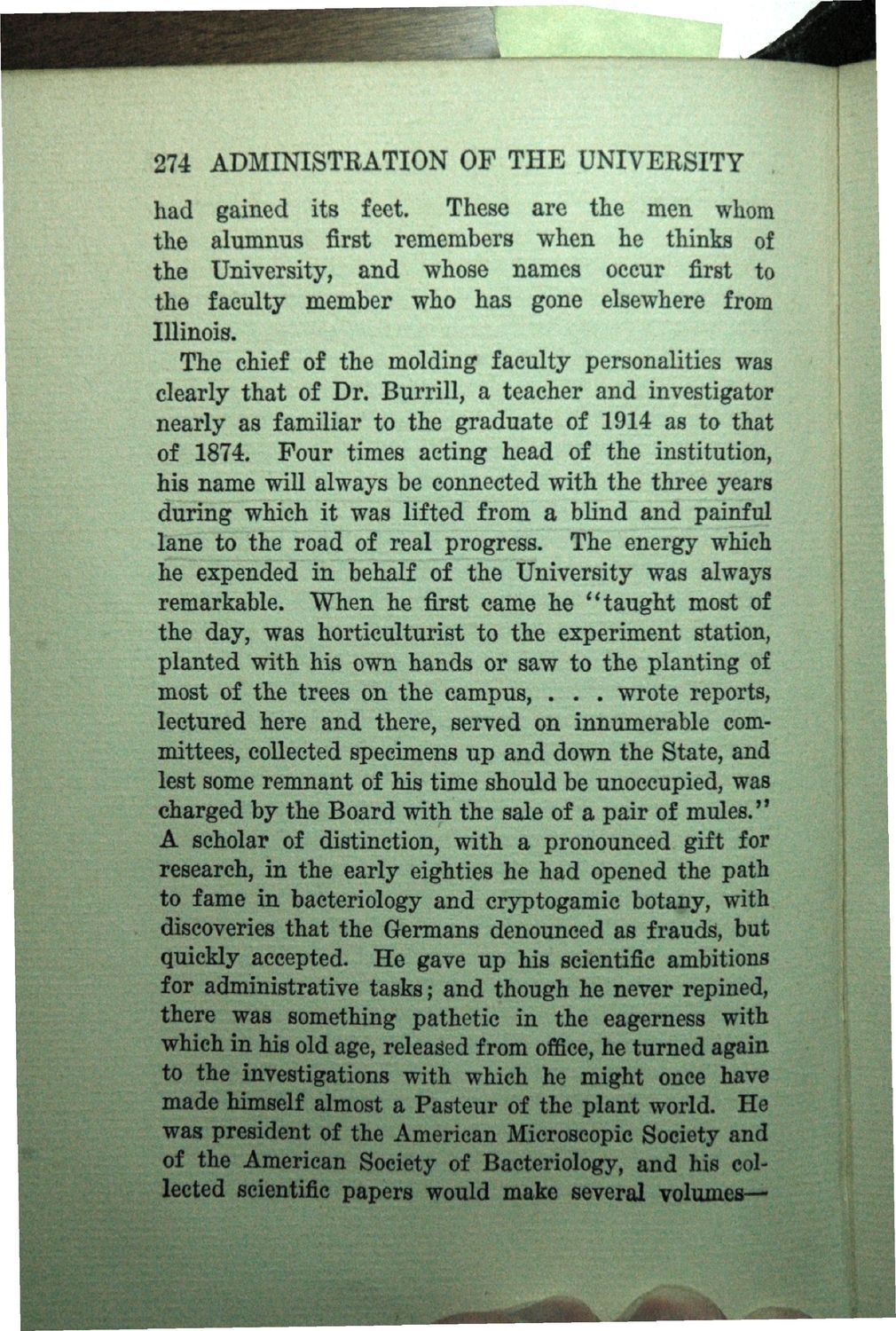| |
| |
Caption: Book - History of the University (Nevins)
This is a reduced-resolution page image for fast online browsing.

EXTRACTED TEXT FROM PAGE:
274 ADMINISTBATION OF THE UNIVERSITY had gained its feet. These are the men whom the alumnus first remembers when he thinks of the University, and whose names occur first to the faculty member who has gone elsewhere from Illinois. The chief of the molding faculty personalities was clearly that of Dr. Burrill, a teacher and investigator nearly as familiar to the graduate of 1914 as to that of 1874. Four times acting head of the institution, his name will always be connected with the three years during which it was lifted from a blind and painful lane to the road of real progress. The energy which he expended in behalf of the University was always remarkable. When he first came he "taught most of the day, was horticulturist to the experiment station, planted with his own hands or saw to the planting of most of the trees on the campus, . . . wrote reports, lectured here and there, served on innumerable committees, collected specimens up and down the State, and lest some remnant of his time should be unoccupied, was charged by the Board with the sale of a pair of mules.'' A scholar of distinction, with a pronounced gift for research, in the early eighties he had opened the path to fame in bacteriology and cryptogamic botany, with discoveries that the Germans denounced as frauds, but quickly accepted. He gave up his scientific ambitions for administrative tasks; and though he never repined, there was something pathetic in the eagerness with which in his old age, released from office, he turned again to the investigations with which he might once have made himself almost a Pasteur of the plant world. He was president of the American Microscopic Society and of the American Society of Bacteriology, and his collected scientific papers would make several volumes— L
| |